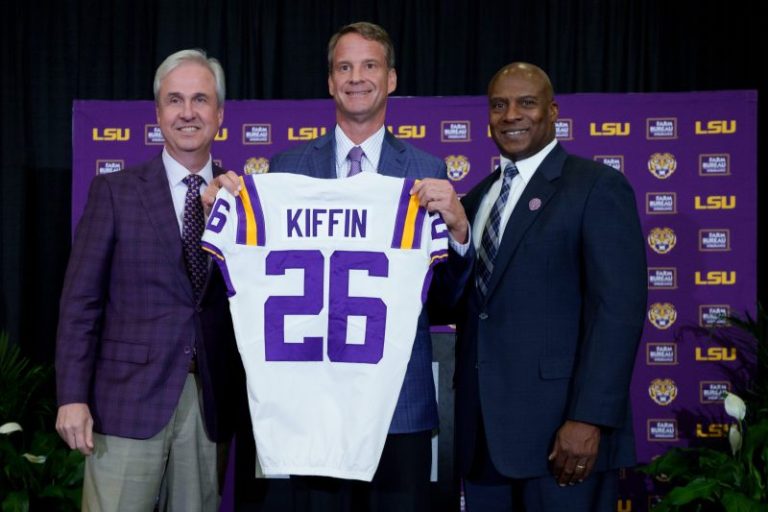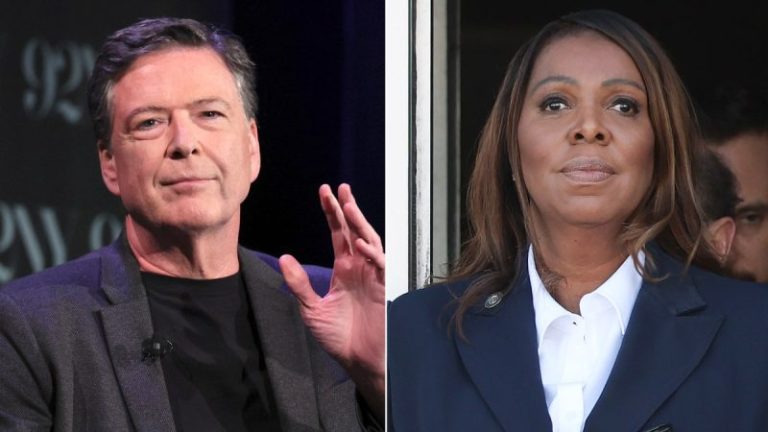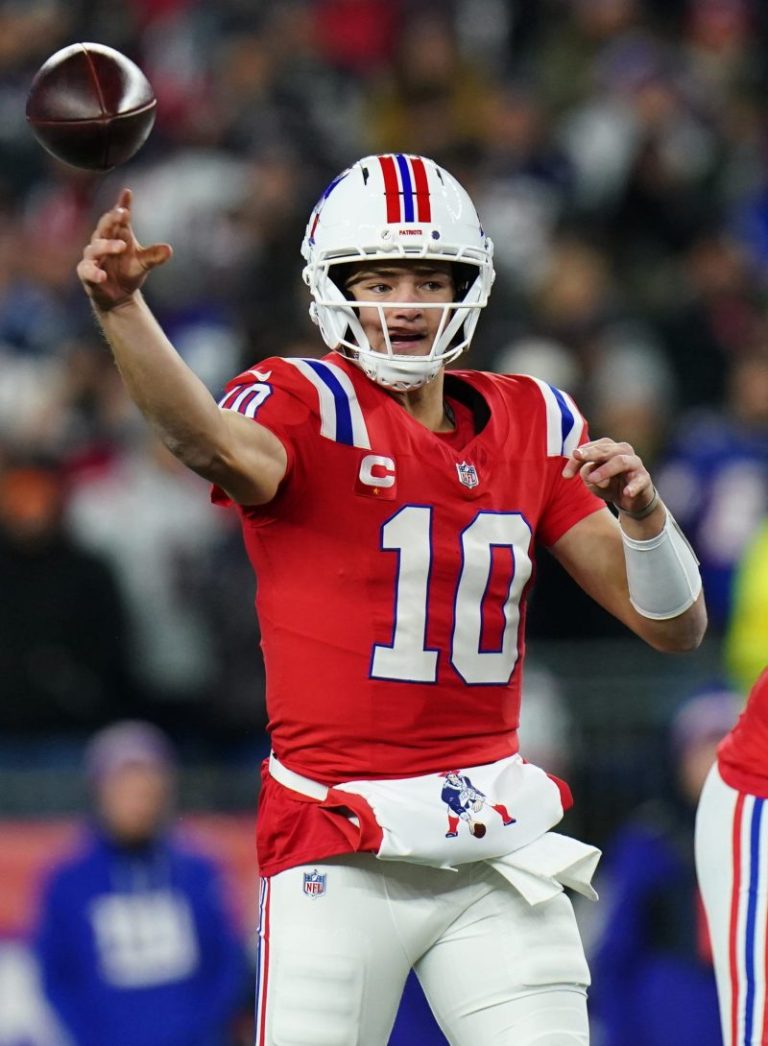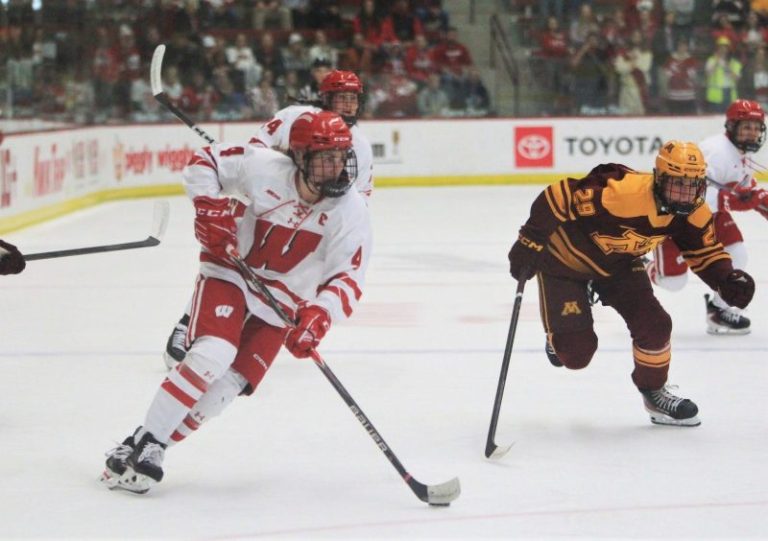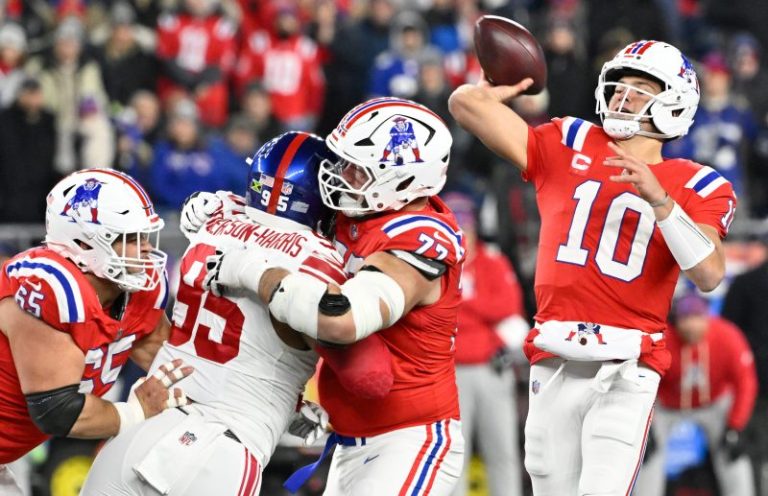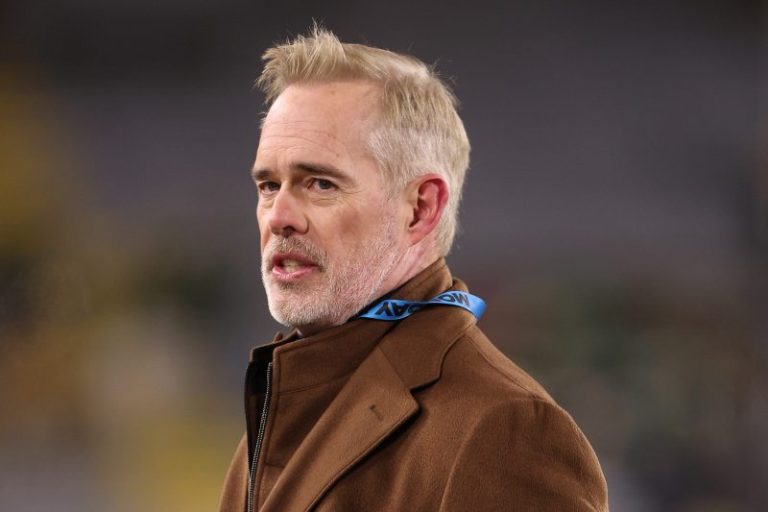BATON ROUGE, LA – Verge Ausberry had secured the greatest booty of college football’s coaching carousel, but LSU’s athletic director still had to travel behind enemy lines to retrieve it.
No trouble, right? Fly into Mississippi. Pick up the package. Fly out.
Ha. Nothing about hiring Lane Kiffin could ever be so easy.
The initial plan had been that LSU’s plane would pick up Kiffin from the Tupelo airport, 50 miles from the University of Mississippi. At least that would provide some distance between the LSU envoy and the Ole Miss fans furious by Kiffin’s heel turn.
Once aboard the plane, Ausberry learned plans had changed. They’d be flying into Oxford, ground zero itself, to secure LSU’s prize.
“I said, ‘We’re going where? Oxford? They’ll be shooting missiles at us,’” Ausberry said.
No missiles fired, but Ole Miss students and fans who gathered at the airport gave the LSU plane and anyone who boarded it a middle-finger salute.
As Ausberry waited for Kiffin to arrive, the pilots asked him if he wanted to deplane and use the restroom.
“I said, ‘That’s OK. I’ll hold it,’” Ausberry said.
Smart thinking.
Kiffin had concerns of his own, and why shouldn’t he? He’d made his choice to leave Ole Miss on the playoff’s doorstep, but he still had to get out of Dodge.
Ole Miss had hired Kiffin when powerhouse schools like LSU didn’t want him. The Rebels had given Kiffin the opportunity to relaunch his career inside the SEC and rebuild his image.
The relationship became gloriously beneficial for both parties for six seasons, but Kiffin couldn’t resist the itch to coach another blue-blood. He left Ole Miss at the worst possible moment — with the Rebels on the verge of their first playoff appearance.
As Kiffin made for his exit route, Ole Miss fans wanted to give him the sendoff he’d earned.
Kiffin claims people tried “to run us off the road” on his drive to the airport. Kiffin had his son, Knox, in the vehicle with him. Kiffin, concerned for their safety, says he called a cop friend for help.
At the Oxford airport, fans were lined up at the fence line, waiting to jeer Kiffin and flip him the bird. Not your ordinary job change, though perhaps a bit familiar for Kiffin.
Even after Kiffin boarded the plane, he wondered to himself: Had he made the right choice to leave?
And then he landed in Baton Rouge.
A king’s welcome awaited. Fans cheered and hollered his name. The savior had arrived. Kiffin noted the time. He’d been in town for six minutes.
“There’s the (LSU) fans, just all of them out there at the airport, and their excitement and their passion … as we’re going to the office, and you go by Tiger Stadium, and it’s lit up, and you are like, I absolutely made the right decision,” Kiffin said, “and (those bad feelings) all went away.’
This is how it goes in the South’s college football hotbeds. They’ll worship you when you arrive. If you win big, they’ll worship you more. You’ll become more than a king. You’ll be a god. What a power trip. Just ask Nick Saban.
If you fail, they’ll holler for your firing.
And, buddy, if you leave for a hated rival, well, good luck getting out of town. Because, that’s not just a job change. That’s betrayal.
One town’s traitor becomes another’s hero.
“That’s the SEC,” Kiffin said. “I’ve been around it long enough to know that, and it’s just the passion of the SEC.”
Kiffin admitted that hearing what Ole Miss fans said as he left and seeing their reaction hurt him. It got to him. He also took it as a compliment: If they were that incensed at him leaving, that must have meant he’d done the job well while he was there.
When Kiffin returns to Ole Miss next season on the LSU sideline, it’ll be the hottest game on that weekend’s calendar. Don’t forget to bring the mustard, Rebels.
Much has been said and written lately about what Kiffin’s exit means for his legacy. At Ole Miss, his name is forever tarnished, but I’m not sure Kiffin’s legacy is all that changed, on the whole.
This is his legacy. He’s arguably the most polarizing figure in college football history.
Years ago, he left a great SEC job in the middle of the night but not undetected. Tennessee fans gathered in protest and literally burned objects in the street.
He’s the lightning rod with enough charisma and talent to make everyone in one state love him, even as everyone in another hates him after he twisted the knife on them.
Of course Kiffin would become the first college football coach to ever leave his team and not coach it in the playoff. And for anyone who thought a coach would never do that, and skip out on a chance to win a national championship, well, you’ve never met Kiffin. He’s the rebel who doesn’t bend to norms.
He likes to say he doesn’t just think outside the box. He builds a new box.
Stay and pursue a national championship at Ole Miss? That would sound nice to some, but, sorry, that’s Baton Rouge calling. Kiffin would have liked to accept the LSU job and have still coached Ole Miss in the playoff. When Ole Miss brass made him choose, he cast his lot with LSU.
And when more coaches repeat this move in the future, Kiffin will take pride in knowing he was the pioneer. He steamrolled the path for all the renegades who’ll inevitably follow.
You’ll hear plenty about how this moment — a coach leaving one team on the playoff’s doorstep to move up the perceived food chain — is awful for the sport.
Is it? Or is it the epitome of this sport.
These past 48 hours and the scenes emanating from Oxford and Baton Rouge could be a dang infomercial for college football, especially within the SEC, or at least a YouTube tutorial for those who don’t understand this zany enterprise.
College football’s never been about the postseason, and certainly not about the College Football Playoff. Heck, the playoff is younger than Kiffin’s youngest son.
College football peaks in the fall, when the rivalries burn hottest, when fans storm the field seconds after an upset ends, not worrying about who they might trample along the way, when games radiate from college towns, inside ancient 100,000-seat cathedrals instead of the glitzy NFL stadiums that hijack the games in the playoff.
No matter how big the bureaucrats make the playoff, college football isn’t about the playoff.
It’s about loving your team, hating your rivals, worshipping your heroes while you revile the heels.
At the heart of college football are the rivalries that burn as hot as the sun.
And at the center of those rivalries, are the coaches.
Even as college athletes celebrate more power and recognition than they’ve ever had before, the coaches are college football’s stars in ways they are not in the pro leagues.
And there’s never quite been a coach like Kiffin. Everyone feels some type of way about him, and they’ll feel those feelings deeper after these past three days.
In Oxford, their former king disgusts them now. That’s fine. He’ll be feted at LSU.
Blake Toppmeyer is the USA TODAY Network’s senior national college football columnist. Email him at BToppmeyer@gannett.com and follow him on X @btoppmeyer.

